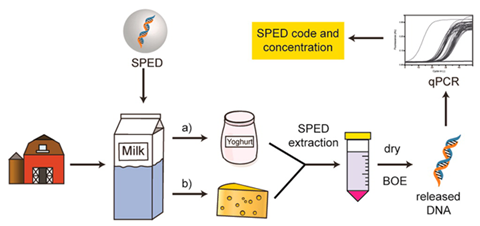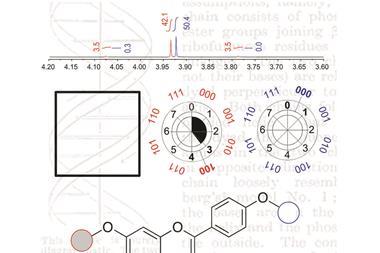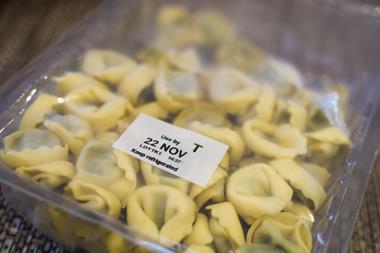Milk has been successfully tracked as it is turned into cheese and yogurt in an advance that could fight food fraud

A DNA ‘barcode’ that can be added directly to food to enable it to be tracked and authenticated as it moves from farm to fork has been developed by scientists in Switzerland. The team showed that their system can track the milk used to make cheese or yogurt, and they say it could help authorities crack down on food fraud.
DNA testing is already used to monitor food authenticity, explains Robert Grass from the Swiss Federal Institute of Technology in Zurich, whose team developed the DNA barcodes. ‘Most techniques work with specific isotope patterns, which are characteristic for a given region, or natural DNA patterns, which are characteristic for a given species,’ he says. ‘Our technology is different, as we deliberately add our label to the foodstuff. This allows us to discriminate products which are chemically identical, such as organic and non-organic.’
To make the barcodes, the team encapsulated short sequences of DNA, around 100 base pairs long, in silica particles that protect the DNA when the food is processed. The DNA barcodes can be added to food at source and later detected in a sample using polymerase chain reaction. As this technique amplifies the target sequence of DNA, it can detect the barcode even at very low concentrations – down to a few parts per billion.
In a proof-of-concept study, Grass and his team added DNA labels to milk, and showed they could still be detected after it had been turned into cheese or yogurt. ‘In principle our approach is possible with nearly all types of food,’ says Grass. ‘We have also been applying the approach to non-food products, including high grade polymers, glues and paints.’ He adds that the team are currently working on products that undergo more complex processing, such as tracing wheat that is turned into flour and then used to make bread.
‘It’s a good piece of research, and an interesting application of the science,’ comments Duncan Campbell, a public analyst for West Yorkshire Analytical Services and past president of the Association of Public Analysts. But he warns there are various legal hurdles to overcome before the system could be applied to food sold for consumption.
‘Before labelled products could be marketed there would have to be considerable changes to food additives legislation across the EU,’ he says. ‘Even if the silica particles didn’t have any DNA in them, silica is only permitted for use as an additive in certain foods and milk is not one of them.’
He adds there is also a risk of members of the public objecting to the technology because of the addition of synthetic DNA to food. ‘There is potential consumer opposition…it’s got the makings of a tabloid scare story,’ he says.
Grass agrees these issues could present difficulties in future. ‘The main question at hand is if the risk of adding our technology to foodstuff can be balanced with the need for foodstuff traceability,’ he says. ‘These are questions we cannot answer on our own – they require an open discussion with the public and regulatory bodies.’












No comments yet